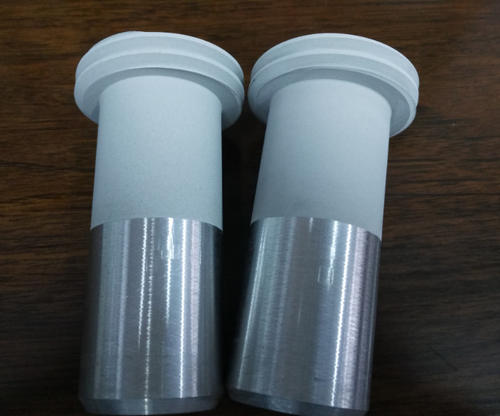High-performance ceramic coatings are a general term for a class of non-metallic inorganic coatings that emerged after organic resins, metals, and alloys. Over the past half-century, with the development of cutting-edge technologies such as aerospace engineering and electronic military industries, high-performance ceramic coatings have also achieved sustained and rapid growth. The coated components made by combining this new type of high-temperature material with a metal matrix not only integrate the properties of monolithic ceramic materials, featuring advantages such as high temperature resistance and chemical corrosion resistance, but also enable the high toughness, high plasticity, and high electrical conductivity of the ceramic coating and the base metal material to complement each other, thereby maintaining the structural strength of the original substrate.

Molding method
① Solid-phase deposition methods: such as self-propagating high-temperature synthesis.
② Gas-phase deposition methods: such as physical vapor deposition (PVD) and chemical vapor deposition (CVD).
③ Wet chemical methods: such as sol-gel method, electroless plating, and chemical composite plating.
④ Thermal spraying methods: such as plasma spraying and flame spraying. This method accounts for more than 50% of the ceramic coating market share.
Advantages and disadvantages
Advantage:
① It can flexibly combine the high temperature resistance, wear resistance, corrosion resistance and other characteristics of ceramic materials with the high strength and toughness, processability, electrical and thermal conductivity of metal materials, complementing each other's advantages to maximize the comprehensive advantages and meet the mechanical products' needs for structural and environmental performance.
② There are a wide variety of materials available for preparing ceramic coatings, and materials such as ceramic-ceramic, ceramic-metal, and ceramic-plastic can be combined as needed. It is also easy to integrate with the original metal processing equipment and conditions to achieve technological transformation of enterprises.
③ Ceramic coatings are easy to form, with fast deposition rates and controllable coating thickness. Different sintering processes can be used for spraying on the surfaces of thin-walled parts, hollow parts, and special-shaped parts, and local spraying reinforcement of products can also be realized.
④ Ceramic coatings can be prepared on different substrates with good processing performance. For example, various inorganic materials such as metals, cement, refractory materials, stone gypsum; plastics and organic materials; wood, cardboard, etc., whose properties can be improved by spraying ceramic coatings. When the ceramic coating is damaged, the metal substrate can still be reused, and ceramic coatings can be sprayed again (the same applies to other substrates if there is no damage affecting secondary use).
⑤ Material consumption is low. The thickness of ceramic coatings is generally between several tens of microns and several millimeters. Moreover, ceramic materials have a low density, so the material consumption is small, but the added value is high.
⑥ There are no restrictions on the size of workpieces or construction sites. Sprayed products can be large or small, and the shape is not limited; they can be constructed in a thermal spraying factory or on-site.
Disadvantages:
① Poor plastic deformation ability, sensitive to stress concentration and cracks, and poor thermal shock and fatigue resistance.
② There is a significant difference in the expansion coefficient and thermal conductivity between ceramic coating materials and metal materials, and the different stress states generated during use will affect their service life.
③ The coating and the substrate are combined by mechanical interlocking or molecular forces, and there is a problem of different bonding strengths between the two sides.

